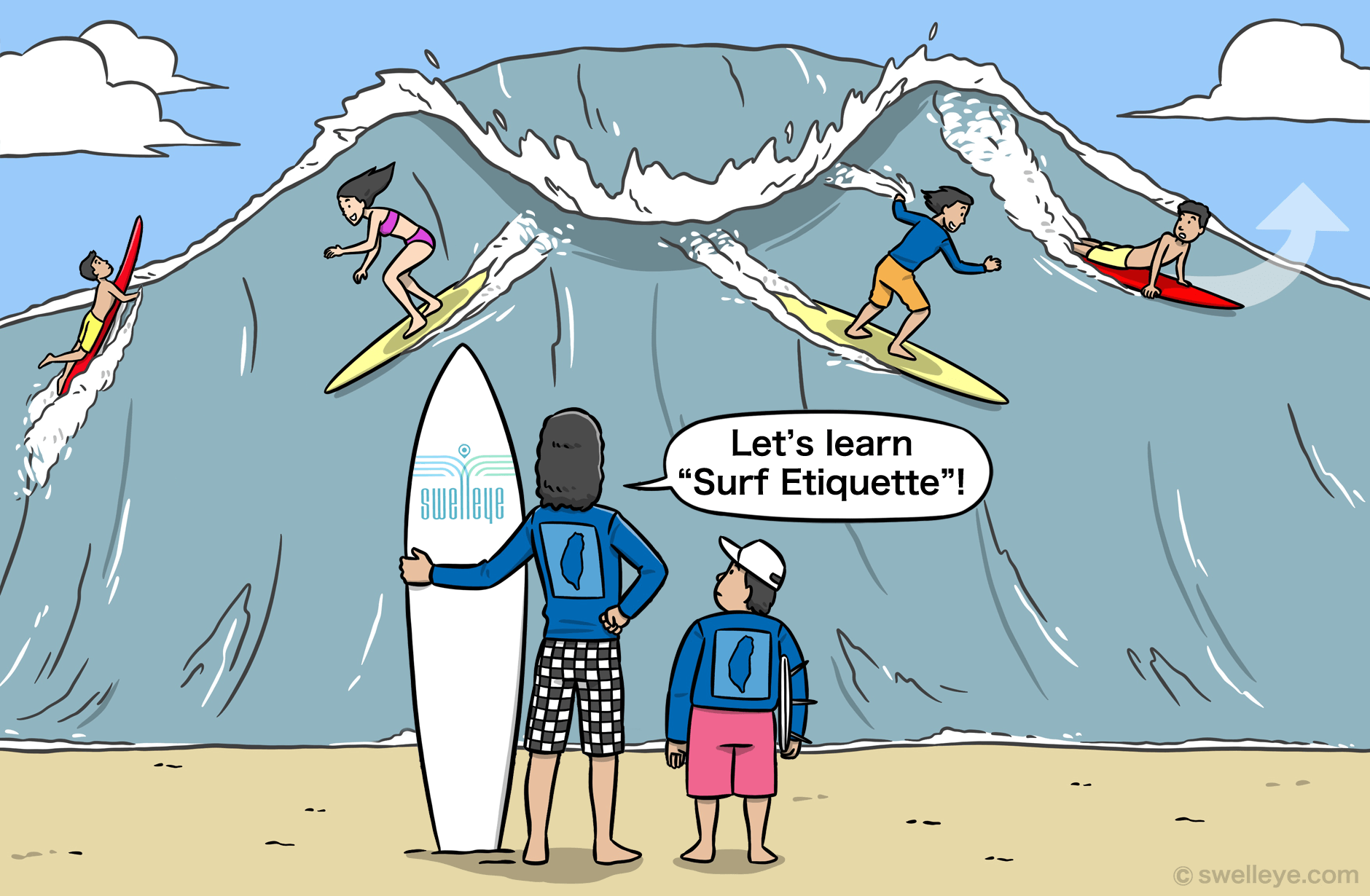
Before taking part in any sport, it is extremely important to understand that sport's basic rules. Surfing can be dangerous at times, so before getting in the water, all surfers should understand the basic rules of surf etiquette.
Surf etiquette will insure that everyone has fun, and more importantly, that everyone stays safe while in the water. To ensure the safety of each other when enjoying a surf session, there are some universally-accepted rules that can help us while in the water. We will start with the most basic rule of surfing, the understanding of “priority."
To put it simply, the person nearest the peak of a wave is the person who has priority to take off on that wave. For example, if you are paddling to your left-hand side about to take off on a wave that is breaking in that direction, and at the same time there is another surfer on your right-hand side closer to the peak of the wave also getting ready to take off. In this case, you should usually give priority to the surfer to your right, who is closer to the peak than you are.
There are some situations where you "could" have the right to that wave, but for the sake of simplicity we won't go into those reasons in this article (feel free to share your thoughts in the comments section below).
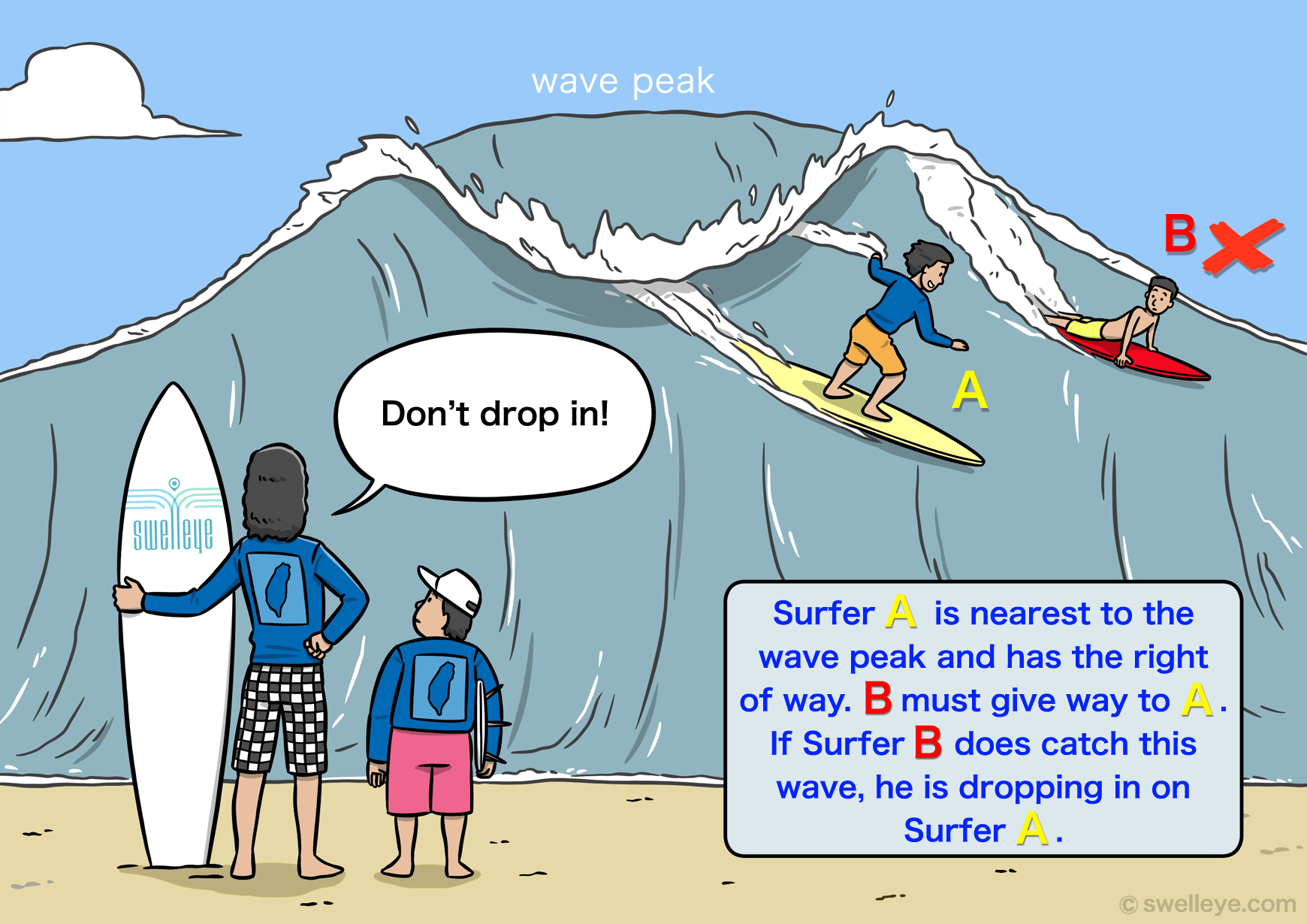
Since it is a bit difficult to fully define “drop in” with a simple explanation, we could say that dropping in is like “cutting in line." A "drop in" occurs when you are already riding a wave and suddenly another surfer appears from the shoulder of the same wave and drops in to it, cutting you off and taking the wave that was rightfully yours. Sometimes a drop in will occur accidentally, especially when it’s crowded. If you have ever surfed Wushi Harbor during the summer, you have more than likely experienced someone dropping in on you!
To avoid the risk of a possible altercation or injury to you, other surfers, and to your surfboards, it’s essential to look and listen closely before taking off on a wave. This is to see if anyone else is already surfing the wave you are about to take off on. If there is another surfer already on the wave, do your best to pull out the back of the wave so that you don't destroy his wave, or worse injure him.
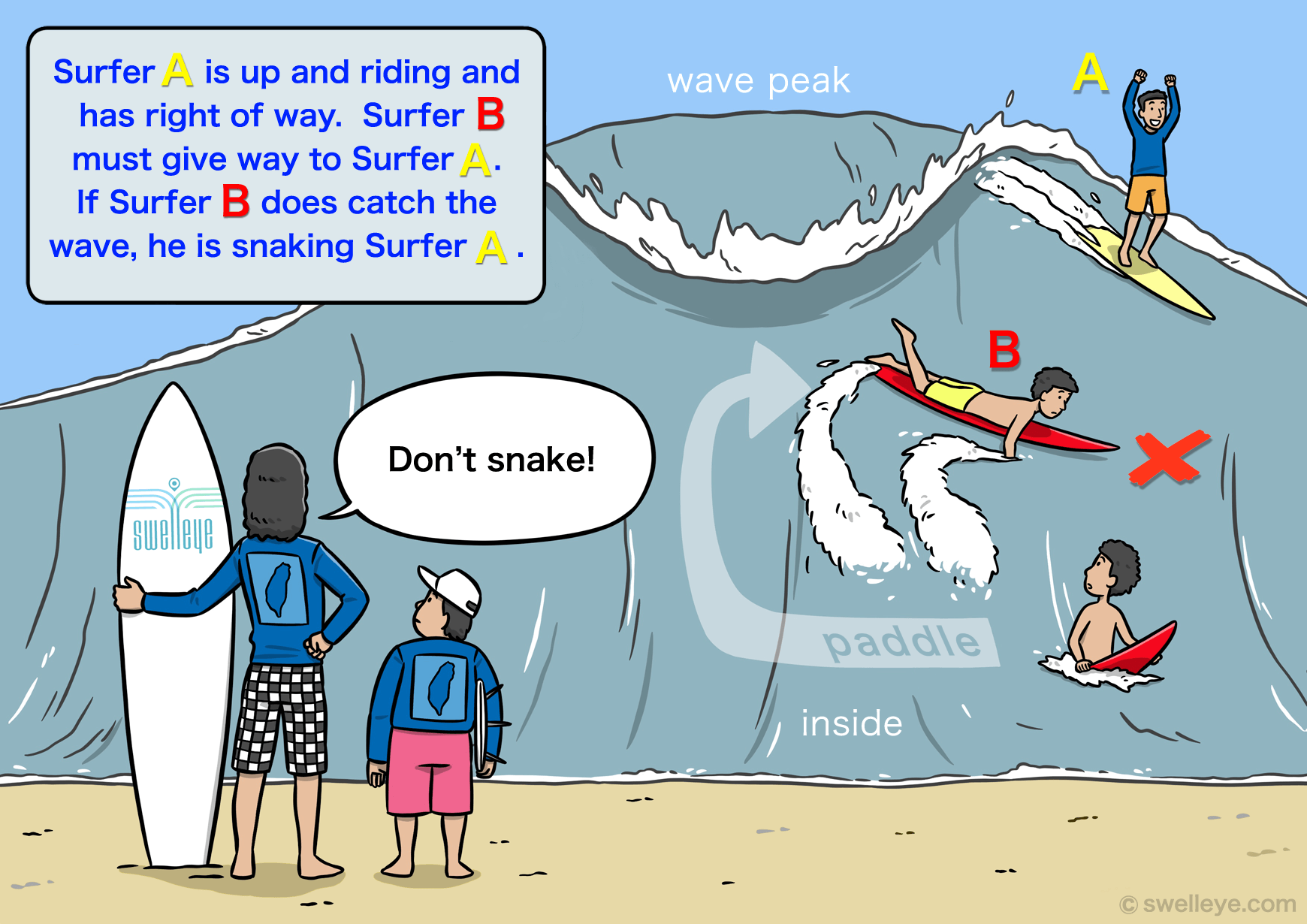
Whereas dropping in can often be accidental, "snaking" is almost always done on purpose. It is usually committed by competent and aggressive surfers who are knowingly exploiting the drop in rule. Snaking works as follows:
Surfer A has been waiting his turn in line and has right to the next wave. As he begins to paddle for his wave, the snake (Surfer B) quickly paddles around Surfer A and positions himself closer to the peak of the wave, making it look as if he has priority. As both surfers catch the wave, it appears that Surfer A has dropped in on Surfer B, but most seasoned surfers will know that Surfer B snaked Surfer A.
Don't be a snake! Wait in line like any respectable and courteous person should. If there's no distinguishable lineup, there is still no excuse for snaking. Earn your waves, don't steal them.
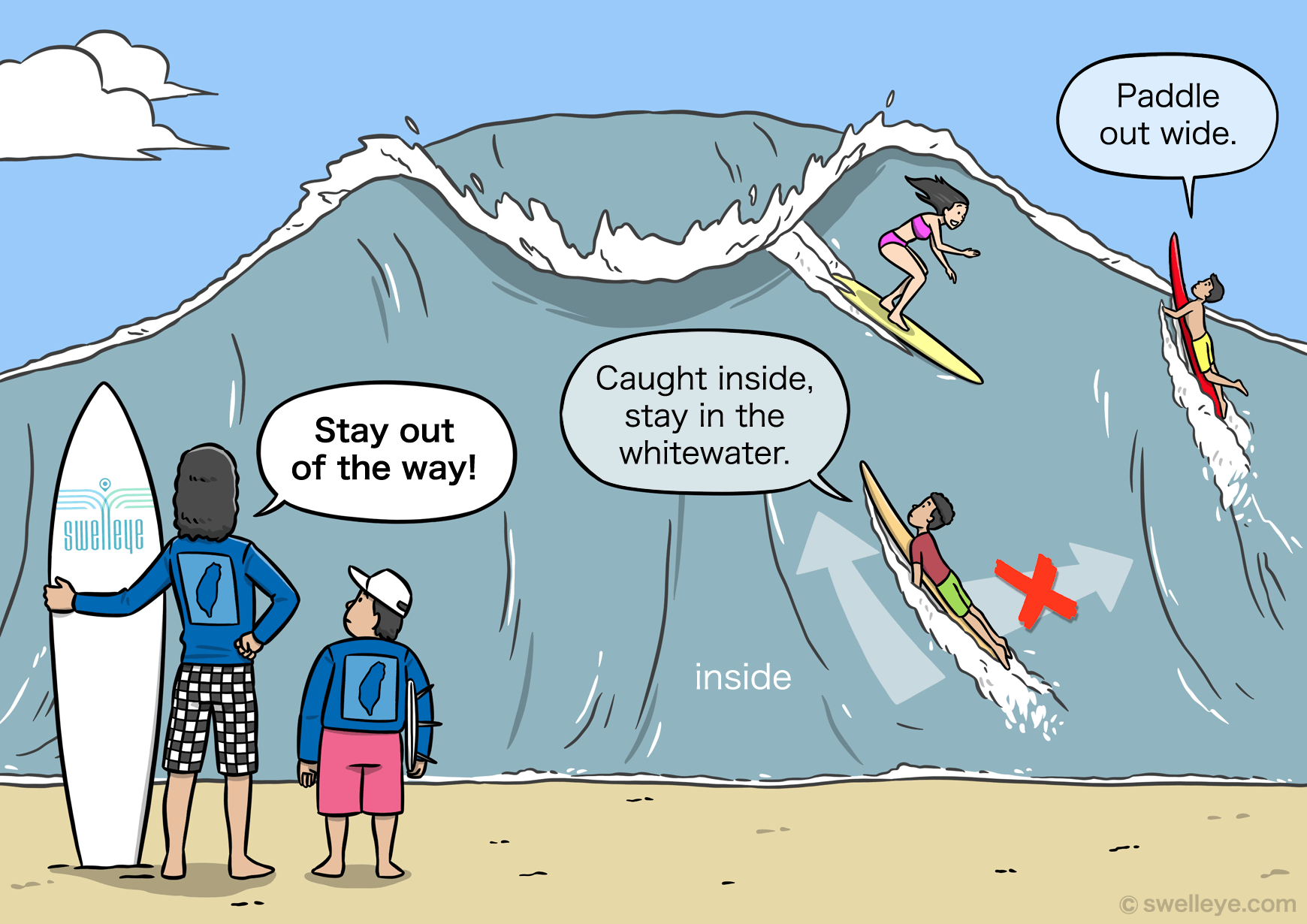
When paddling to get to the outside, most surfers have had the experience of nearly colliding with a surfer who is up and surfing an oncoming wave. In order to be respectful to the riding surfer and to prevent serious injury, it is the responsibility of the surfer paddling out to stay out of the way.
There are usually two options surfers have when paddling out:
Paddle Wide
Ideally, you should never be paddling directly towards the takeoff zone. It's more difficult from a paddling standpoint, and it's a recipe for disaster (either argument or injury).
The best option is to paddle wide of the takeoff zone, staying clear of the shoulder and any riding surfers. Not only is paddling wide safer and more courteous, it's usually a better route for saving paddle energy (depending on the break of course).
Stay in the White Water
If you are caught further inside and unable to paddle wide, paddle towards the white water of the breaking wave instead. This will be more difficult than paddling wide, and may require a duck dive or turtle roll (don't ditch your board!), but is a far safer option than paddling over the face of a wave that has a riding surfer on it.
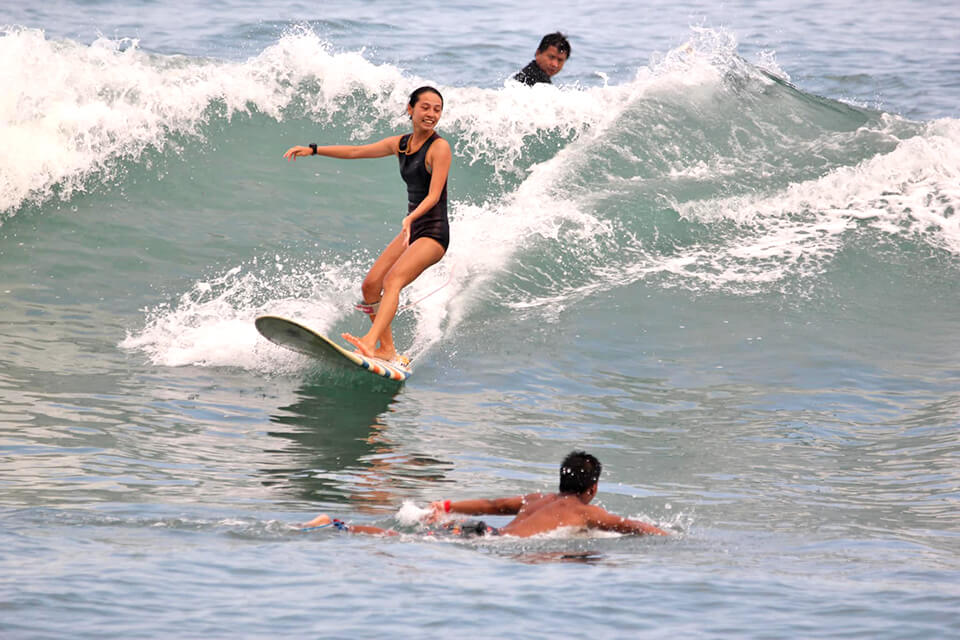
Remember, the responsibility is on the surfer paddling out to stay out of the way. You cannot assume that the riding surfer has the skills to avoid hitting you. As we were all beginners at some point, we all know that beginners do not have the skills yet to navigate their boards around other surfers. When paddling out, assume that everyone is a beginner and stay out of their way!
Surfers who are the furthest out (i.e. furthest from the beach) have priority. The surfers furthest out are usually longboarders and SUPs, since bigger boards with more volume can typically catch waves earlier (further out) and more easily than shortboarders (most shortboarders are probably hitting their monitor screen or phone right now!). However, it is important that longboarders and SUPs share waves with shortboarders who are further on the inside. Understand and recognize that the need for balance in the water is an essential part of the surfing spirit, and that includes sharing waves. The furthest out gets priority, but don't forget to share the stoke!
Many advanced surfers will take advantage of their superior surfing skills and therefore take all the wave. As described in rule #5 above, many longboarders and SUPs think they have the right to all waves (since they are furthest out) and will say "My wave!" every time. If it's not a longboarder or SUP, then it might be an advanced shortboarder who's taking all of the waves. This behavior is unacceptable and disrespectful to your fellow surfers. Each surfer should know that it is his or her responsibility to set a good example by practicing the spirit of sharing. It will help build a positive and friendly surfing environment for everyone.
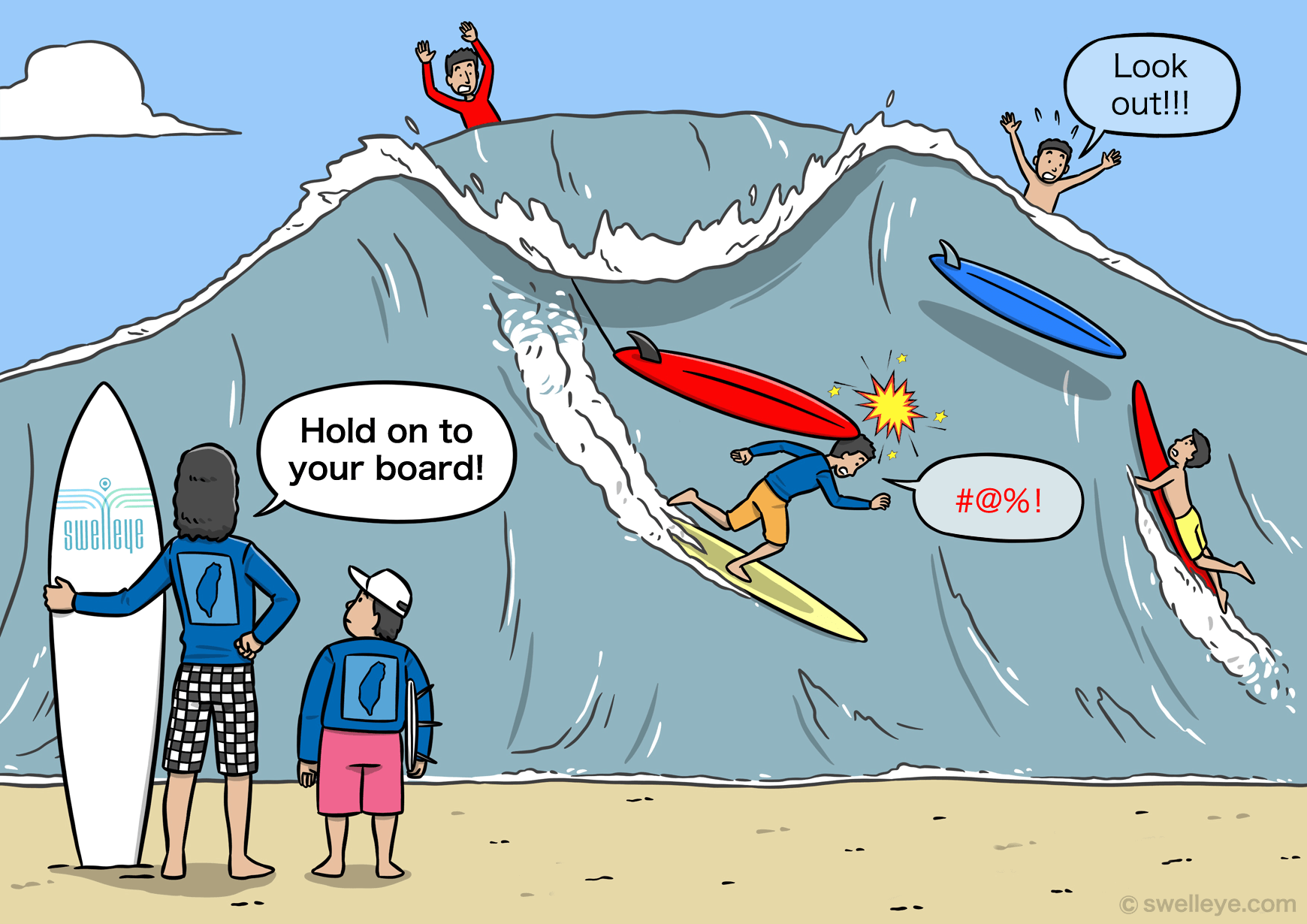
In certain conditions and situations, a surfboard can become a dangerous projectile in the surf. For your own safety and the safety of others around you, make sure that your leash is on properly and that you don't ditch your board. Ditching is when you wipe out and lose control of your board, allowing it to aimlessly fly around. This is very dangerous and can cause serious injuries to others.
When you wipe out or finish a wave, do your best to grab and hold onto your board. Sometimes that's not always possible, and if you are unable to hold onto your board after a wipeout, you should immediately retrieve it as quickly as possible. Quickly pulling on your leash to get your board back may keep it from hitting someone else.
As you become a more experienced surfer, it will become easier to keep your board under your feet, as well as wipe out while still controlling your board. Regardless of your level, always do your best not to ditch your board. This will save you and others from injury, and will also prevent possible damage to your board and others' boards.
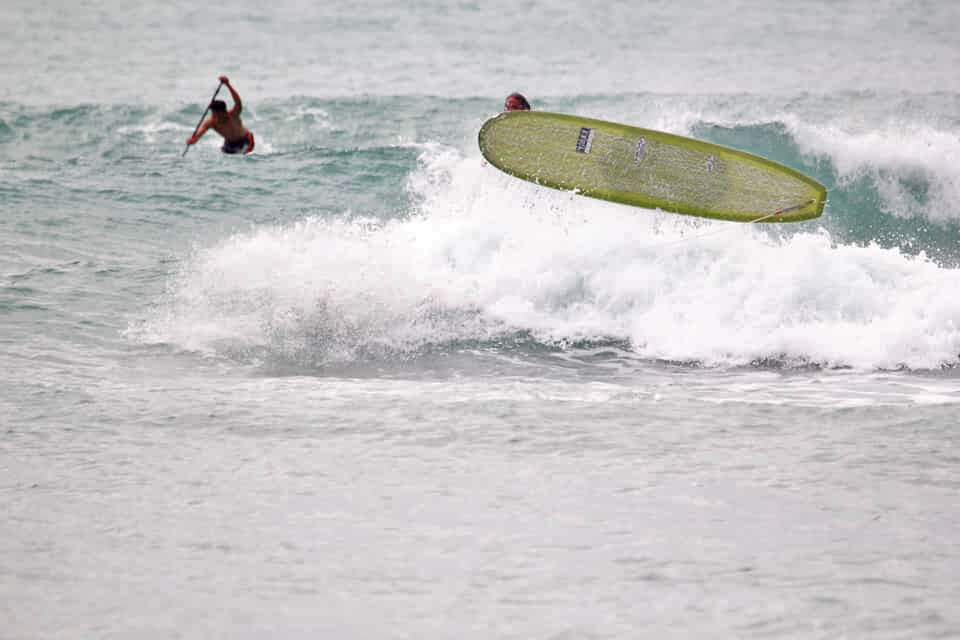
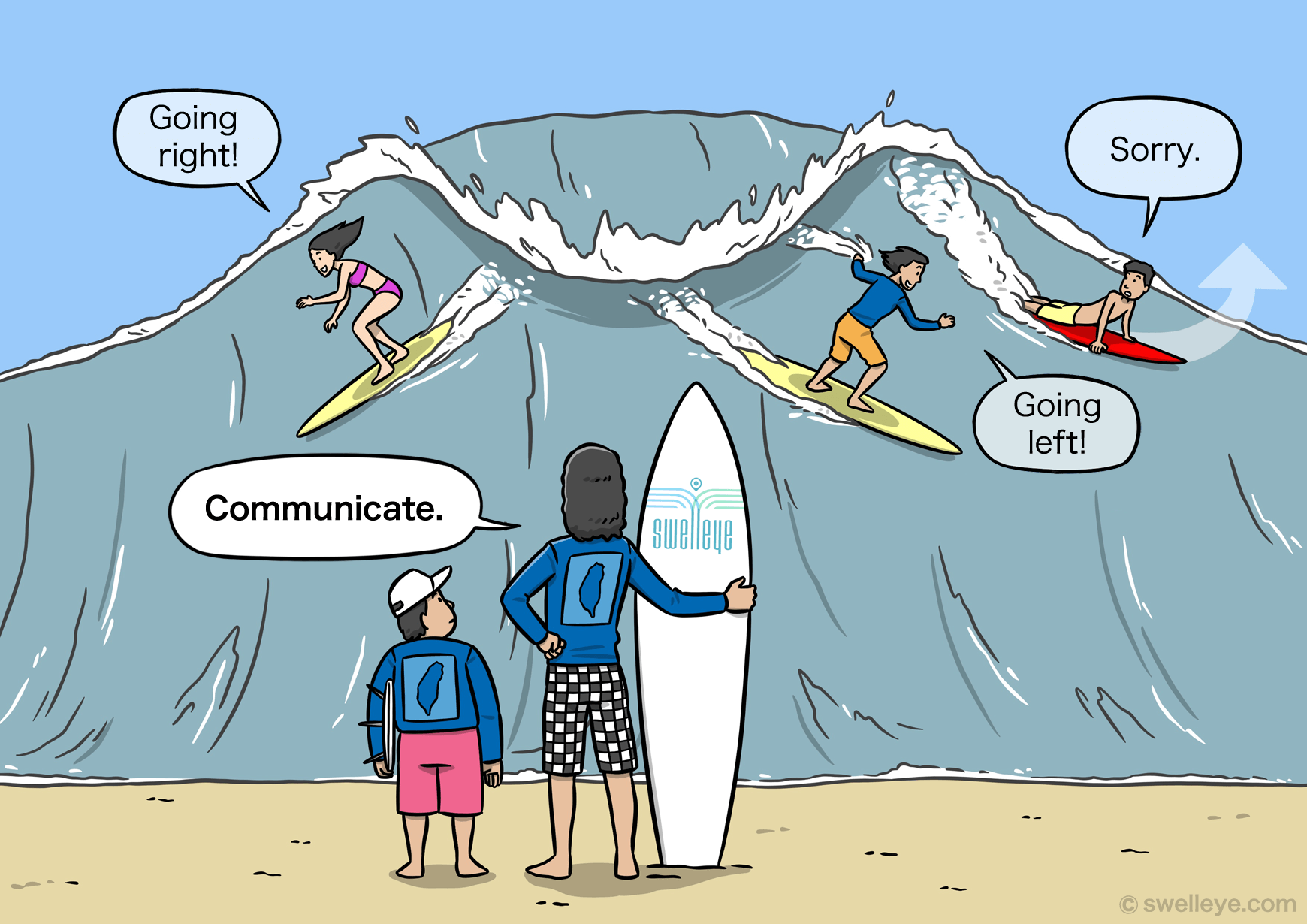
In an effort to make your sessions enjoyable and safe, proper and clear communication is essential. An example of good communication in the surf is when two surfers are waiting at the peak of a wave. This particular wave is an a-frame, with rideable faces both to the left and the right. Before taking off on the wave, it's necessary to call out to say which direction you're going. Obviously if you're on the left side (facing the beach), you should go left. The surfer on the right side should go right. Clearly stating which direction you plan to go will reduce confusion and hesitation while taking off, making way for smoother and safer takeoffs for both surfers. It’s a simple action, but this kind of clear and mutual communication is necessary to prevent unintentional drop ins and other potentially dangerous situations.
It's also a good habit to communicate "sorry" when you accidentally break one of the etiquette rules, like accidentally dropping in on someone. It can quickly ease tensions by letting the other surfer know you didn't do it intentionally. Saying "thanks" also goes a long way when someone lets you have a wave.
Experiences like paddling into plastic bags, walking over beach trash, and stepping on dog crap should all be reminders of the environmental habits we should keep. Every time you go to the beach, don't forget to take your trash with you when you leave. You can also pick up some of the other litter on the beach and dispose of it properly.
After being in the ocean and experiencing the high of a good surf, removing some trash from the beach is a great way of giving back to the natural environment and saying "Thank you" to our Mother Ocean! Looking after and taking care of the environment is everyone's responsibility.
To do our part, Swelleye donates at least 3% of our net profits, as well as our time, towards the education and improvement of Taiwan’s environment. Learn more about "3% for Taiwan," view previous and future events, and learn how you can join us and help!
Treat everyone in the water in a respectful and civilized way, as if they were your surf buddies. When you travel to new surf spots, remember to respect the locals. At the same time, when you see new faces at your local spot, share a few waves with them. Sharing the stoke is one of the best things about surfing.
As surfing icon Phil Edwards stated, "The best surfer out there is the one having the most fun.” If everyone understands, respects, and practices the rules of surf etiquette, having fun in the water will be easy. Let's all remember to be the best kind of surfers - the ones having the most fun.